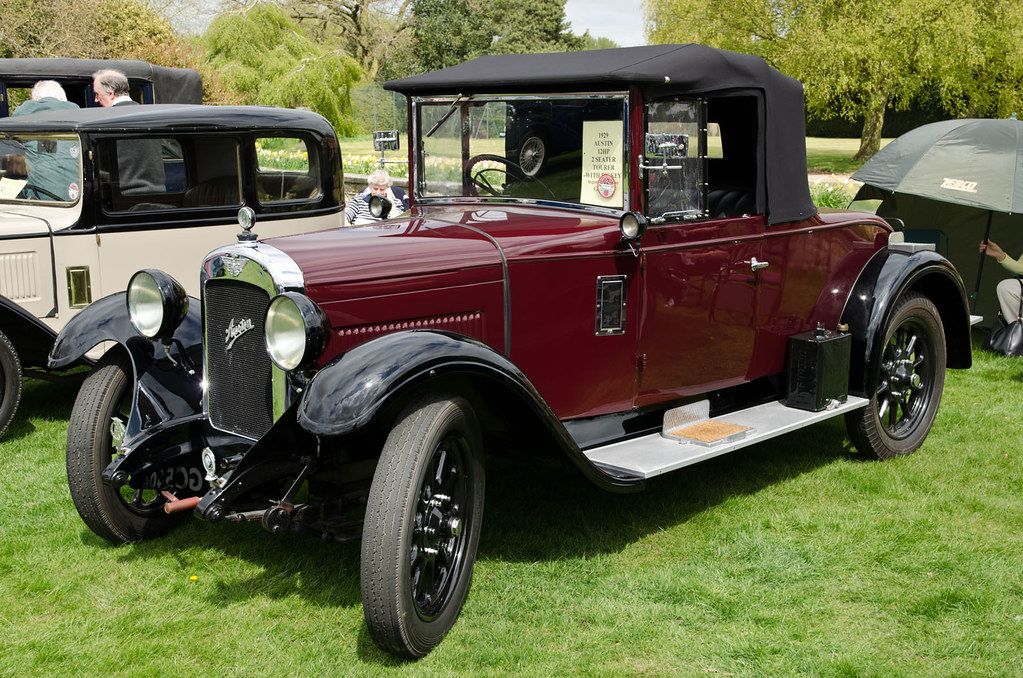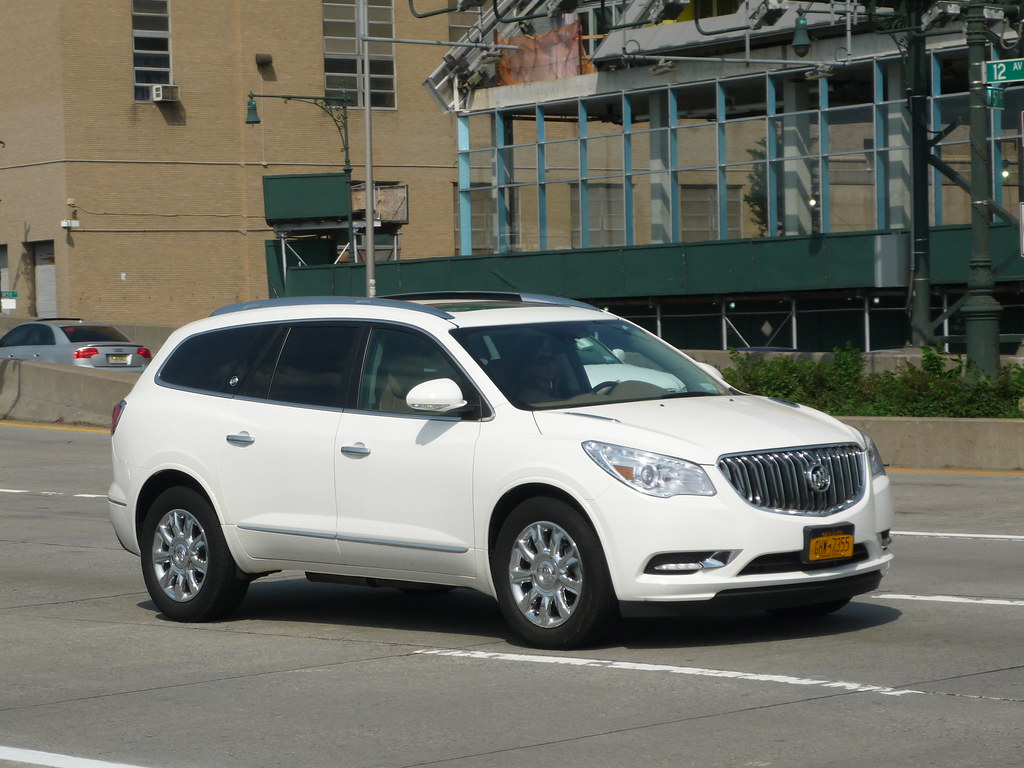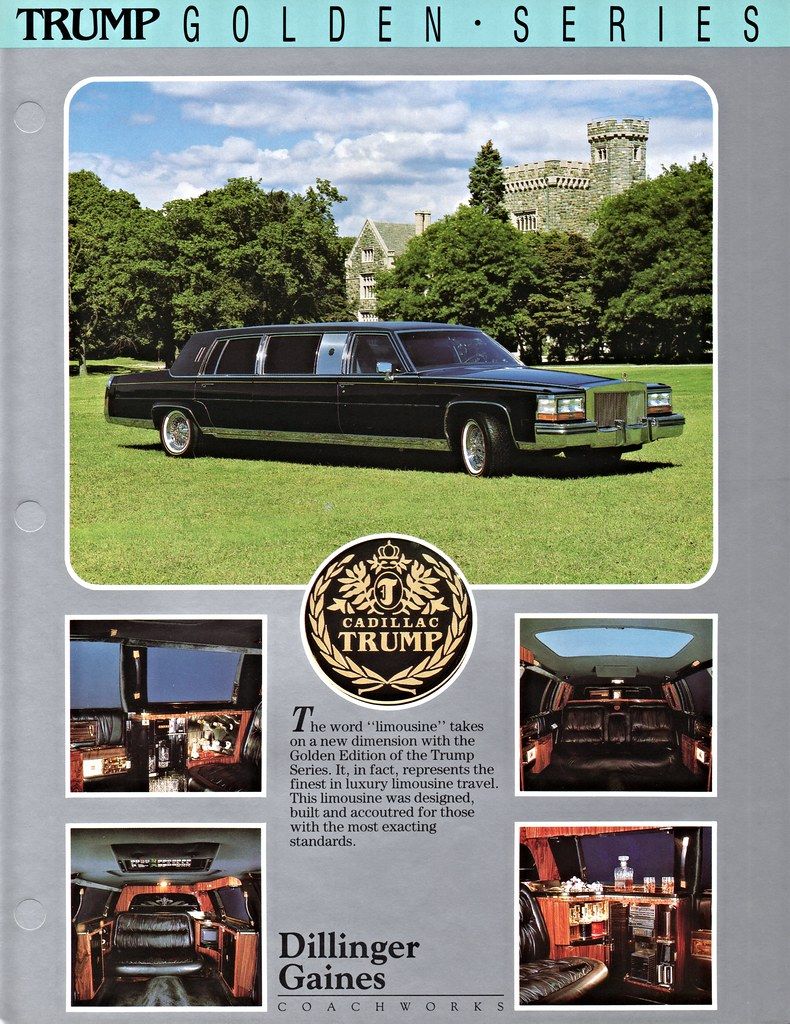
John Wayne, a name synonymous with American machismo, rugged individualism, and cinematic legend, carved an indelible image into the fabric of Hollywood history. For over 50 years, “The Duke” graced screens in 184 films and TV shows, most notably as the quintessential silver-screen cowboy, often seen on horseback. Yet, beyond the cinematic saddles and dusty trails, Wayne harbored a profound appreciation for a different kind of horsepower—the kind found under the hood of classic American automobiles. His personal garage, much like his on-screen persona, reflected a blend of power, practicality, and an unwavering loyalty to quality craftsmanship.
While many might associate Wayne with the speedy 1973 Firebird Trans Am he famously piloted in “McQ,” a vehicle that remains an iconic movie car, his everyday preferences leaned towards something far more family-friendly, yet equally robust: the Pontiac station wagon. This choice speaks volumes about the man behind the legend—a desire for comfort and utility for his family, combined with a distinct American pride in his automotive selections. His collection, which was the envy of many an enthusiast, revealed a discerning taste that embraced both formidable muscle and understated elegance.
His vehicles, especially his beloved Pontiacs, were not merely modes of transport; they were extensions of his character. Each car tells a story, from the custom modifications made to accommodate his towering 6-foot-4 frame and ever-present cowboy hat, to the careful choices that defined his family’s journeys. These aren’t just cars; they are artifacts of a bygone era, deeply intertwined with the life and legacy of one of America’s most enduring icons, captivating enthusiasts decades after their heyday. Let us now embark on a journey through the first half of John Wayne’s remarkable automotive collection, starting with his most cherished family haulers.
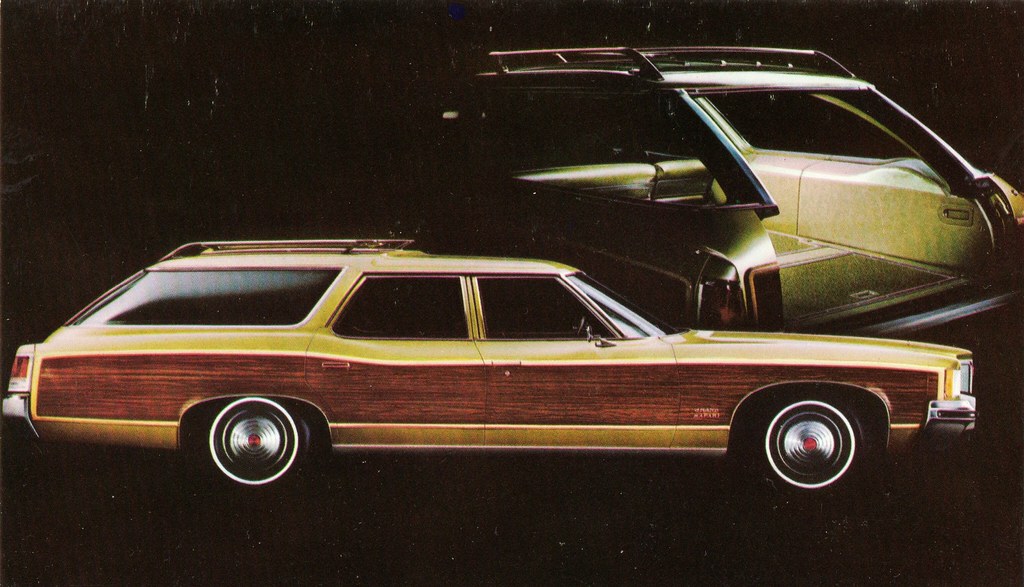
1. **The Iconic 1972 Pontiac Grand Safari Station Wagon**Among John Wayne’s most cherished possessions was his fleet of Pontiac Grand Safari station wagons, with the 1972 model holding a significant place in his collection. These vehicles, introduced by Pontiac in 1971, were renowned for their substantial size and formidable presence, qualities that perfectly aligned with “The Duke’s” larger-than-life image. It wasn’t just a car; it was a statement, embodying the era’s taste for spacious, powerful American cruisers designed for the open road.
This particular Grand Safari was powered by a robust 6.6L V8 engine, delivering 200 horsepower and 330 lb-ft of torque, coupled with a 3-speed automatic transmission. These specifications ensured a commanding drive, capable of reaching 60 mph in a respectable 10 seconds and boasting a top speed of 120 mph. Such performance figures, while not sports-car-level, provided ample motivation for a family vehicle of its considerable proportions, reflecting a blend of utility and effortless power that appealed to Wayne’s pragmatic sensibilities.
What truly elevates the 1972 Grand Safari in the annals of John Wayne lore is its bespoke nature. Like many of his personal vehicles, this wagon underwent modifications by the legendary George Barris at his Barris Kustom Industries garage. Barris, celebrated for creating iconic vehicles like the Batmobile, applied his expertise not to wild stylings, but to practical enhancements tailored specifically for Wayne, such as raising the roof and increasing the door frames to accommodate his 6-foot-4 stature and his ever-present cowboy hat.
This customized 1972 Grand Safari, known for its “impeccable originality and what appeared to be its factory-applied Wilderness Green exterior finish,” is now a prized exhibit at the John Wayne Birthplace Museum in Winterset, Iowa. Its presence offers visitors a tangible link to the man himself, allowing enthusiasts to pore over the “455-powered wagon” and appreciate the vehicle that ferried “The Duke” in his personal life, away from the cinematic spotlight.
Car Model Information: 2022 Honda Civic Sport
Name: Pontiac Grand Safari
Caption: 1972 Pontiac Grand Safari
Assembly: Pontiac Assembly,Pontiac, Michigan,United States
Manufacturer: Pontiac (automobile)
Production: 1971–1978
Class: Full-size car
BodyStyle: station wagon
Layout: Front-engine, rear-wheel-drive layout
Related: Buick Estate,Oldsmobile Custom Cruiser
Predecessor: Pontiac Bonneville#Fourth generation (1965–1970)
Successor: Pontiac Bonneville#Sixth generation (1977–1981)
Categories: 1970s cars, Articles with short description, Cars introduced in 1971, Pontiac vehicles, Short description is different from Wikidata
Summary: The Pontiac Grand Safari was Pontiac’s top-of-the-line full-size station wagon offered from 1971 to 1978. The Grand Safari used the grille and interior trim of the Bonneville and Grand Ville passenger car series, and most (but not all) examples were trimmed with woodgrain paneling on the sides and tailgate.
Get more information about: Pontiac Grand Safari
Buying a high-performing used car >>>
Brand: Pontiac Model: Grand Safari
Price: $25,849 Mileage: 16,061 mi.
Read more about: Beyond the Chrome: A Deep Dive into 12 Iconic 1960s Luxury Car Ads That Defined a Golden Era of Automotive Storytelling

2. **The Practical Appeal of the 1975 Pontiac Grand Safari Station Wagon**John Wayne’s affinity for the Pontiac Grand Safari was so pronounced that he acquired multiple iterations of the model throughout the 1970s, a clear indication of his satisfaction with its design and utility. Following his positive experience with earlier models, he procured the 1975 Pontiac Grand Safari Station Wagon, further cementing this vehicle’s status as a favored family hauler for the “True Grit” Oscar winner. This continuity in his automotive choices highlights a consistency in his real-life preferences, mirroring the steadfast characters he often portrayed on screen.
John Wayne’s affinity for the Pontiac Grand Safari was so pronounced that he acquired multiple iterations of the model throughout the 1970s, a clear indication of his satisfaction with its design and utility. Following his positive experience with earlier models, he procured the 1975 Pontiac Grand Safari Station Wagon, further cementing this vehicle’s status as a favored family hauler for the “True Grit” Oscar winner. This continuity in his automotive choices highlights a consistency in his real-life preferences, mirroring the steadfast characters he often portrayed on screen.
The 1975 model represented an evolution of the Grand Safari, maintaining the large dimensions and comfortable ride that Wayne appreciated. Under its hood, this particular iteration packed an even more potent 7.5L V8 engine, generating 210 horsepower and a robust 350 lb-ft of torque. Coupled with a 3-speed automatic transmission, it could accelerate from 0-60 mph in a swift 9.5 seconds and reach a top speed of 125 mph. These figures underscore Pontiac’s commitment to delivering strong performance in their full-size wagons, ensuring highway cruising was as effortless as city driving.
Like its predecessors, Wayne’s 1975 Grand Safari was not merely a stock vehicle. It too received the Barris Kustom Industries treatment, further emphasizing “The Duke’s” commitment to personalized comfort, confirming its bespoke nature. This level of personalization set Wayne’s vehicles apart, transforming them into unique extensions of his practical needs, ensuring he could enjoy his family travels without compromise.
This particular dark gray 1975 family wagon, distinguished by a bright red interior, found its way to the Mecum auction block in 2014, some 35 years after Wayne’s passing. Its sale, fetching a cool $71,000, and subsequent re-auction at Barrett-Jackson Las Vegas in 2016 for $60,500, speaks volumes about the enduring allure of John Wayne’s possessions and the collector’s market for celebrity-owned automobiles.
Car Model Information: 2022 Honda Civic Sport
Name: Pontiac Grand Safari
Caption: 1972 Pontiac Grand Safari
Assembly: Pontiac Assembly,Pontiac, Michigan,United States
Manufacturer: Pontiac (automobile)
Production: 1971–1978
Class: Full-size car
BodyStyle: station wagon
Layout: Front-engine, rear-wheel-drive layout
Related: Buick Estate,Oldsmobile Custom Cruiser
Predecessor: Pontiac Bonneville#Fourth generation (1965–1970)
Successor: Pontiac Bonneville#Sixth generation (1977–1981)
Categories: 1970s cars, Articles with short description, Cars introduced in 1971, Pontiac vehicles, Short description is different from Wikidata
Summary: The Pontiac Grand Safari was Pontiac’s top-of-the-line full-size station wagon offered from 1971 to 1978. The Grand Safari used the grille and interior trim of the Bonneville and Grand Ville passenger car series, and most (but not all) examples were trimmed with woodgrain paneling on the sides and tailgate.
Get more information about: Pontiac Grand Safari
Buying a high-performing used car >>>
Brand: Pontiac Model: Grand Safari
Price: $25,849 Mileage: 16,061 mi.
Read more about: Unearthing the Best Factory Muscle Trucks: A Deep Dive into Performance Legends and Their Enduring Legacy

3. **The Tailored Comfort of the 1976 Pontiac Grand Safari Station Wagon**The pinnacle of John Wayne’s commitment to personalized automotive comfort is perhaps best exemplified by his 1976 Pontiac Grand Safari Station Wagon. This particular vehicle stands out not only as one of his last personally used cars but also as a direct testament to his unique needs and unwavering personal style. It solidified the Grand Safari’s role as “Mr. Wayne’s daily driver,” a designation that speaks volumes about its reliability and his preference for its qualities.
The pinnacle of John Wayne’s commitment to personalized automotive comfort is perhaps best exemplified by his 1976 Pontiac Grand Safari Station Wagon. This particular vehicle stands out not only as one of his last personally used cars but also as a direct testament to his unique needs and unwavering personal style. It solidified the Grand Safari’s role as “Mr. Wayne’s daily driver,” a designation that speaks volumes about its reliability and his preference for its qualities.
Customization for the 1976 Grand Safari was again entrusted to George Barris, the “King of the Kustomizers,” who personally attended to Wayne’s specific requirements. The most iconic modification, and one that has become legendary, was the raising of the roof. As Barry Paster, Barris’s son-in-law, recounts, “Mr. Wayne did not want to take his hat off to get into the car, so George Barris raised the roof.” This anecdote perfectly encapsulates Wayne’s larger-than-life persona and his practical approach to everyday challenges.
Beyond the memorable roof modification, the 1976 Grand Safari shared the robust mechanical foundations of its siblings. It was powered by a potent 7.5L V8 engine, delivering 210 horsepower and 350 lb-ft of torque, paired with a 3-speed automatic transmission. This powertrain offered consistent performance, capable of achieving 0-60 mph in 9.5 seconds and a top speed of 125 mph, making it a capable and comfortable vehicle for family excursions or Hollywood commutes.
This customized 1976 Grand Safari holds a place of honor as a museum-worthy artifact. It is currently on display as part of the “John Wayne: An American Experience” exhibit at the Fort Worth Stockyards in Fort Worth, Texas. Overseen by Wayne’s son, Ethan Wayne, the inclusion of this vehicle among other personal artifacts highlights its “sentimental value as much for its uniqueness,” as it served as the “Wayne family ferry when they spent time at their 26-Bar Ranch in Arizona.”
Car Model Information: 2022 Honda Civic Sport
Name: Pontiac Grand Safari
Caption: 1972 Pontiac Grand Safari
Assembly: Pontiac Assembly,Pontiac, Michigan,United States
Manufacturer: Pontiac (automobile)
Production: 1971–1978
Class: Full-size car
BodyStyle: station wagon
Layout: Front-engine, rear-wheel-drive layout
Related: Buick Estate,Oldsmobile Custom Cruiser
Predecessor: Pontiac Bonneville#Fourth generation (1965–1970)
Successor: Pontiac Bonneville#Sixth generation (1977–1981)
Categories: 1970s cars, Articles with short description, Cars introduced in 1971, Pontiac vehicles, Short description is different from Wikidata
Summary: The Pontiac Grand Safari was Pontiac’s top-of-the-line full-size station wagon offered from 1971 to 1978. The Grand Safari used the grille and interior trim of the Bonneville and Grand Ville passenger car series, and most (but not all) examples were trimmed with woodgrain paneling on the sides and tailgate.
Get more information about: Pontiac Grand Safari
Buying a high-performing used car >>>
Brand: Pontiac Model: Grand Safari Station Wagon
Price: $25,849 Mileage: 16,061 mi.

4. **The Lesser-Known 1970 Pontiac Bonneville Wagon, a Precursor to His Grand Safari Loyalty**While the Grand Safari models of the mid-1970s are prominently associated with John Wayne, his affinity for Pontiac station wagons predates these well-documented customs. Enthusiast Rocky Rotella, a fellow John Wayne fan and Pontiac admirer, recollects encountering images of “The Duke’s” modified 1970 Bonneville wagon on the internet. This earlier model serves as a crucial piece of the puzzle, illustrating that Wayne’s preference for large, comfortable Pontiac wagons was not an isolated phase, but a consistent automotive choice rooted in practical admiration.
While the Grand Safari models of the mid-1970s are prominently associated with John Wayne, his affinity for Pontiac station wagons predates these well-documented customs. Enthusiast Rocky Rotella, a fellow John Wayne fan and Pontiac admirer, recollects encountering images of “The Duke’s” modified 1970 Bonneville wagon on the internet. This earlier model serves as a crucial piece of the puzzle, illustrating that Wayne’s preference for large, comfortable Pontiac wagons was not an isolated phase, but a consistent automotive choice rooted in practical admiration.
The Pontiac Bonneville, particularly in its full-size wagon configuration, represented a significant commitment to luxury and space within the Pontiac lineup. The 1970 model would have featured a formidable V8 engine, consistent with Pontiac’s reputation for powerful American automobiles. This vehicle would have offered a blend of comfortable cruising, ample cargo capacity, and the distinctive styling that characterized Pontiacs of that era, making it an ideal choice for a family-oriented megastar.
The fact that this 1970 Bonneville also received custom modifications from George Barris is a key detail, further solidifying the long-standing relationship between Wayne and the legendary customizer. It implies that Wayne’s need for enhanced headroom, or other personal touches, was a recurring requirement that Barris consistently addressed across multiple vehicles. This consistency underscores Wayne’s unwavering personal needs and Barris’s trusted role in fulfilling them, well before the later Grand Safari models became famous.
Rotella’s personal recollection confirms the depth of Wayne’s connection to these vehicles, noting, “I had seen pictures of his ’70 Bonneville wagon and remember when his last car—a ’75 Grand Safari—crossed Barrett-Jackson’s auction block a few years back, but I wasn’t totally aware that he’d had another Pontiac between them.” This earlier Pontiac wagon demonstrates that Wayne was not merely a passive owner of custom cars; he was actively involved in ensuring his vehicles met his specific requirements.
Car Model Information: 2022 Honda Civic Sport
Name: Pontiac Bonneville
Caption: 2000–2005 Pontiac Bonneville
Manufacturer: Pontiac (automobile)
Production: 1958–2005,1983–2005 (Canada)
Assembly: Pontiac Assembly,Pontiac, Michigan
Class: Full-size car
Layout: FR layout
Predecessor: Pontiac Star Chief,Pontiac Executive
Successor: Pontiac G8
Categories: 1950s cars, 1960s cars, 1970s cars, 1980s cars, 1990s cars
Summary: The Pontiac Bonneville is a model line of full-size or mid-size rear-wheel drive (until 1987) or front-wheel drive cars manufactured and marketed by Pontiac from 1957 until 2005.
The Bonneville (marketed as the Parisienne in Canada until 1981), and its platform partner, the Grand Ville, are some of the largest Pontiacs ever built; in station wagon body styles they reached just over 230 inches (5.8 m) long. They were also some of the heaviest cars produced at the time at 5,000 pounds (2,300 kg) or more.
The Bonneville nameplate was introduced as a limited production performance convertible during the 1957 model year, its name taken from the Bonneville Salt Flats in Utah, an early site of U.S. automobile racing and numerous world land speed records.
Get more information about: Pontiac Bonneville
Buying a high-performing used car >>>
Brand: Pontiac Model: Bonneville Wagon
Price: $25,849 Mileage: 16,061 mi.
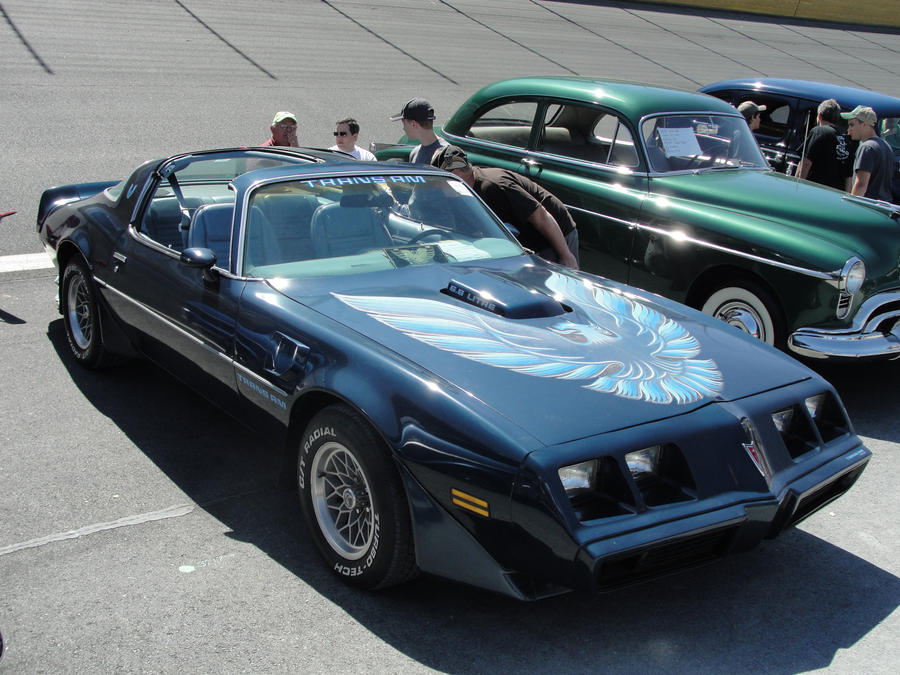
5. **The Cinematic Legend: John Wayne’s 1973 Firebird Trans Am from “McQ”**While John Wayne’s personal garage often featured family-friendly station wagons, his on-screen roles occasionally showcased a different side of his automotive taste, embodying the sheer power and raw appeal of American muscle. The speedy 1973 Firebird Trans Am he drove in the 1974 film “McQ” stands as a monumental example, ranking “among the most iconic movie cars of the decade, if not all time.” This Brewster Green Trans Am, in one of five movies to feature the model, firmly etched the car into cinematic history and into the minds of Pontiac enthusiasts.
While John Wayne’s personal garage often featured family-friendly station wagons, his on-screen roles occasionally showcased a different side of his automotive taste, embodying the sheer power and raw appeal of American muscle. The speedy 1973 Firebird Trans Am he drove in the 1974 film “McQ” stands as a monumental example, ranking “among the most iconic movie cars of the decade, if not all time.” This Brewster Green Trans Am, in one of five movies to feature the model, firmly etched the car into cinematic history and into the minds of Pontiac enthusiasts.
The 1973 Firebird Trans Am was a quintessential muscle car, a stark contrast to the utilitarian station wagons Wayne favored in his private life. It boasted aggressive styling, a performance-tuned suspension, and a powerful engine that delivered exhilarating acceleration. Though specific engine details for the movie car aren’t provided, Trans Ams of that era were known for their large displacement V8s, offering significant horsepower and torque, making them formidable machines on the road.
In “McQ,” Wayne portrayed Seattle police detective Lon McQ, and the Trans Am became an extension of his tough-guy persona. The car’s dynamic presence in chase scenes and its distinctive design perfectly complemented Wayne’s rugged screen image, adding a layer of contemporary cool to his classic grit. It proved that “The Duke” could seamlessly transition from a horse to a high-performance American automobile, captivating audiences with his command of both.
For Pontiac enthusiasts, particularly Firebird fans, “McQ” is a film held in high regard, primarily due to Wayne’s association with the Trans Am. It provided a powerful visual endorsement of the brand’s performance pedigree, associating it with a figure known for strength and determination. The film served as a cultural touchstone, linking the legendary actor with one of Pontiac’s most celebrated models, further solidifying its status as an icon.
Car Model Information: 2022 Honda Civic Sport
Name: Pontiac Firebird
Caption: The second, third, and fourth generations of,the Pontiac Firebird Trans Am
Manufacturer: Pontiac (automobile)
Production: February 23, 1967 – August 30, 2002
ModelYears: 1967 – 2002
Class: Pony car,Muscle car
Platform: GM F platform
Related: Chevrolet Camaro
Layout: Front engine, rear-wheel-drive layout
Categories: 1970s cars, 1980s cars, 1990s cars, 2000s cars, All articles with dead external links
Summary: The Pontiac Firebird is an American automobile built and produced by Pontiac from the 1967 to 2002 model years. Designed as a pony car to compete with the Ford Mustang, it was introduced on February 23, 1967, five months after GM’s Chevrolet division’s platform-sharing Camaro. This also coincided with the release of the 1967 Mercury Cougar, Ford’s upscale, platform-sharing version of the Mustang.
The name “Firebird” was also previously used by GM for the General Motors Firebird series of concept cars in the 1950s.
Get more information about: Pontiac Firebird
Buying a high-performing used car >>>
Brand: PONTIAc Model: Firebird Trans Am
Price: $25,849 Mileage: 16,061 mi.

6. **The Rugged Utility of the 1966 International Harvester Travelall**Beyond his beloved Pontiacs, John Wayne’s garage housed other vehicles that perfectly embodied his tough, no-nonsense image, none more so than the 1966 International Harvester Travelall. This robust truck, a pioneering competitor to the Chevrolet Suburban, was a testament to Wayne’s practical side and his appreciation for vehicles designed to tackle demanding environments. It represented a different facet of American automotive strength, focusing on unyielding utility and off-road capability.
Beyond his beloved Pontiacs, John Wayne’s garage housed other vehicles that perfectly embodied his tough, no-nonsense image, none more so than the 1966 International Harvester Travelall. This robust truck, a pioneering competitor to the Chevrolet Suburban, was a testament to Wayne’s practical side and his appreciation for vehicles designed to tackle demanding environments. It represented a different facet of American automotive strength, focusing on unyielding utility and off-road capability.
The 1966 International Harvester Travelall was far more than just a family wagon; it was a rugged, go-anywhere utility vehicle. Under the hood, it typically featured a 4.9L V8 engine, producing 193 horsepower and 272 lb-ft of torque, mated to a 4-speed manual transmission. While its 0-60 mph time and top speed were not its primary selling points (Top Speed around 90 mph), its strength lay in its ability to navigate “rugged terrain,” making it a perfect match for Wayne’s adventurous spirit and his film roles that often took him to remote locations.
This particular Travelall gained additional prominence by being featured in the 1959 Harvester World Magazine, a testament to its real-world utility and connection to the working American landscape. More significantly, it was utilized on the set of his film “The Horse Soldiers,” further cementing its association with Wayne’s cinematic endeavors. Its presence on a film set underscored its authentic ruggedness, proving it was a vehicle truly capable of the demands of both Hollywood production and demanding terrain.
The value and historical significance of Wayne’s 1966 International Harvester Travelall were dramatically underscored in 2011 when it was auctioned off for an impressive $1 million. This sale, facilitated by Texas State Legislator Joe Pickett, marked the end of its association with one of Hollywood’s most legendary figures and highlighted the premium placed on items directly linked to “The Duke.” The extraordinary auction price reflects not just the vehicle’s inherent qualities but also the immense cultural weight carried by anything owned by John Wayne.
Having explored John Wayne’s cherished Pontiac station wagons and a couple of other rugged utility vehicles that defined his practical side and cinematic presence, it’s time to delve deeper into the diverse and often surprising additions to his personal garage. Beyond the family haulers, “The Duke’s” collection reveals a broader spectrum of automotive interests, reflecting his multifaceted personality and enduring legacy. These vehicles, from quintessential American luxury to unexpected choices, each contribute a unique chapter to the story of John Wayne, the car enthusiast.
Car Model Information: 2022 Honda Civic Sport
Name: International Travelall
Caption: 1975 International Travelall Custom 150
Manufacturer: International Harvester
Production: 1953-1975
Class: Full-size SUV
BodyStyle: Station wagon
Layout: FR layout,Four-wheel drive
Wheelbase: 115.0 in
Abbr: on
Predecessor: International L series
Sp: us
Categories: 1960s cars, 1970s cars, All articles with dead external links, All articles with unsourced statements, Articles with dead external links from March 2018
Summary: The International Travelall is a model line of vehicles that were manufactured by International Harvester from 1953 to 1975. A station wagon derived from a truck chassis, the Travelall was a forerunner of modern people carriers and full-size sport utility vehicles. Competing against the Chevrolet Suburban for its entire production, the model line was the first vehicle in the segment to offer four passenger doors.
As International did not produce passenger cars, the Travelall wagon sourced its chassis from the International pickup truck line. Following the 1961 introduction of the Scout (a precursor to off-road oriented SUVs), the Travelall continued to follow the development of the pickup truck line, competing against the slightly larger Suburban and the smaller Jeep Wagoneer.
After the 1975 model year, International Harvester ended production of the Travelall and its Light Line pickup trucks. Since the 1980 discontinuation of the Scout, International has focused its road vehicle production exclusively on medium-duty and heavy-duty commercial trucks.
Get more information about: International Travelall
Buying a high-performing used car >>>
Brand: International Harvester Model: Travelall
Price: $25,849 Mileage: 16,061 mi.

7. **The Quintessential American Luxury: The 1959 Cadillac Coupe DeVille**John Wayne, famously nicknamed “The Duke,” owned what many would describe as one of the most iconic and stylish cars in the world: the 1959 Cadillac Coupe DeVille hardtop. This vehicle, an emblem of post-war American luxury, certainly made a statement, much like Wayne himself. Its stunning appearance, characterized by those distinctive tall tailfins and bullet taillights, was likely irresistible to a man of Wayne’s stature and taste, even if its 6-foot-4-inch height posed some initial adjustment challenges.
John Wayne, famously nicknamed “The Duke,” owned what many would describe as one of the most iconic and stylish cars in the world: the 1959 Cadillac Coupe DeVille hardtop. This vehicle, an emblem of post-war American luxury, certainly made a statement, much like Wayne himself. Its stunning appearance, characterized by those distinctive tall tailfins and bullet taillights, was likely irresistible to a man of Wayne’s stature and taste, even if its 6-foot-4-inch height posed some initial adjustment challenges.
The 1959 Cadillac Coupe DeVille was not just about aesthetics; it was a powerhouse of its era. Under the hood, it featured a robust 6.4L V8 engine, generating 325 horsepower and a formidable 400 lb-ft of torque. Paired with a smooth 3-speed automatic transmission, this luxury cruiser could achieve 0-60 mph in a respectable 10.2 seconds and reach a top speed of 130 mph. These performance figures, combined with its opulent styling, truly solidified its status as a flagship American automobile.
Known for his straightforward and deeply patriotic demeanor, Wayne’s choice of a Cadillac, an emblematic American-made automobile, seemed to resonate perfectly with his lifestyle and values. It was a car that projected success, confidence, and a distinctly American spirit, aligning seamlessly with the image he cultivated both on and off-screen. It’s a testament to the enduring appeal of this model that Cadillacs have long been a favorite among vintage car enthusiasts, even drawing admiration from fellow legendary American actor Gary Cooper.
Car Model Information: 2022 Honda Civic Sport
Name: Cadillac DeVille
Caption: 2004 Cadillac DeVille DHS
Manufacturer: Cadillac
Production: 1958–2005
ModelYears: 1959–2005
Class: luxury car
Layout: FR layout
Predecessor: Cadillac Series 62
Successor: Cadillac DTS
Categories: 1950s cars, 1960s cars, 1970s cars, 1980s cars, 1990s cars
Summary: The Cadillac DeVille is a model name used by Cadillac over eight generations, originally to designate a trim level of the 1949 Cadillac Series 62 and later for a standalone model in the brand range. The last model marketed specifically as a DeVille was the 2005 full-size sedan, at the time, Cadillac’s largest model.
For 2006, the DeVille nameplate was retired, when the model line was carried forward (with minor revisions) as the Cadillac DTS, using a nomenclature adopted by the Cadillac STS and CTS.
Get more information about: Cadillac de Ville series
Buying a high-performing used car >>>
Brand: Cadillac Model: Coupe DeVille
Price: $25,849 Mileage: 16,061 mi.
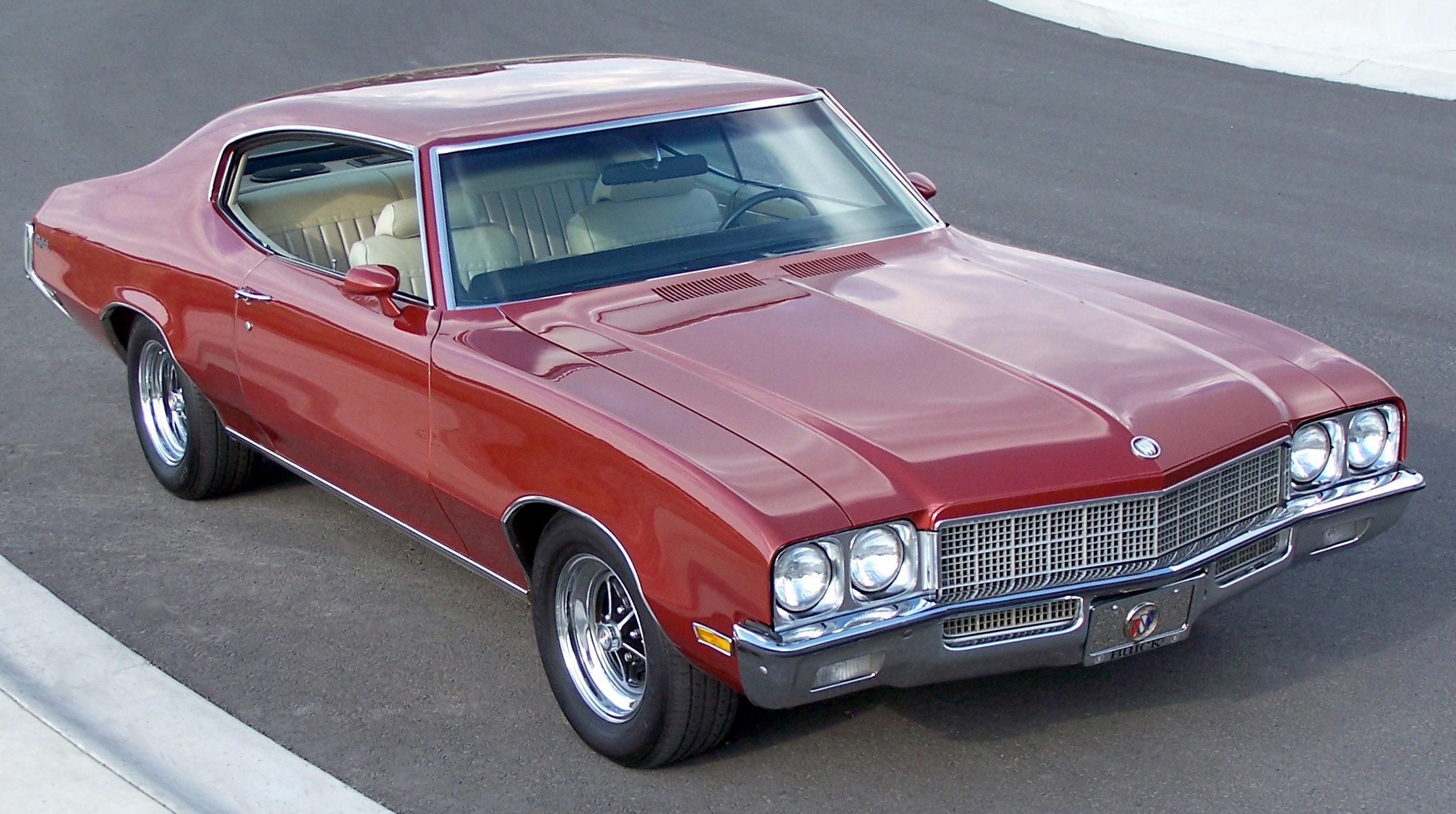
8. **The Personal Touch: John Wayne’s 1972 Buick Electra, Now a Museum Piece**The 1972 Buick Electra represented another significant, yet often overlooked, car in John Wayne’s impressive collection. This particular vehicle holds special importance as it is now proudly displayed as part of the John Wayne Birthplace Museum in Winterset, Iowa. Its presence in the museum offers visitors a tangible link to Wayne’s personal life, symbolizing his journey from a small-town boy to an undisputed Hollywood legend and reflecting his growing affluence.
The 1972 Buick Electra represented another significant, yet often overlooked, car in John Wayne’s impressive collection. This particular vehicle holds special importance as it is now proudly displayed as part of the John Wayne Birthplace Museum in Winterset, Iowa. Its presence in the museum offers visitors a tangible link to Wayne’s personal life, symbolizing his journey from a small-town boy to an undisputed Hollywood legend and reflecting his growing affluence.
The Buick Electra was a full-size luxury car, renowned for its comfortable ride, spacious interior, and powerful performance. The 1972 model was equipped with a potent 7.5L V8 engine, delivering 255 horsepower and 370 lb-ft of torque through a 3-speed automatic transmission. These specifications allowed the Electra to accelerate from 0-60 mph in a swift 8.5 seconds and reach a top speed of 115 mph, offering a blend of effortless cruising and substantial power befitting a Hollywood icon.
As John Wayne’s wealth and fame grew over the span of his illustrious film career, so too did his passion for acquiring high-quality automobiles that matched his status. The Buick Electra, with its blend of comfort, power, and prestige, therefore became a fitting addition to his impressive garage. Its preservation at the museum ensures that enthusiasts can continue to appreciate this personal artifact, offering insights into the private world of “The Duke.”
Car Model Information: 1960 Buick Electra Base
Caption: 1967 Electra 225 Custom 4-door Hardtop
Name: Buick Electra
Manufacturer: Buick
Production: 1959–1990
Class: Full-size car,Luxury vehicle
Aka: Buick Electra 225
Predecessor: Unbulleted list
Successor: Unbulleted list
Categories: 1960s cars, 1970s cars, 1980s cars, 1990s cars, All Wikipedia articles written in American English
Summary: The Buick Electra is a full-size luxury car manufactured and marketed by Buick from 1959 to 1990, over six generations. Introduced as the replacement for the Roadmaster lines, the Electra served as the flagship Buick sedan line through its entire production and was offered as a two-door sedan, two-door convertible, four-door sedan, and five-door station wagon.
The Electra initially used GM’s rear-drive C Platform, undergoing a significant downsizing for 1977.
For its sixth generation, introduced for model year 1985, the Electra underwent another significant downsizing, and adopted unibody construction as well as GM’s new front wheel drive C Platform — becoming along with its rebadged variants, the Oldsmobile 98 and Cadillac Deville and Fleetwood, the company’s first full-size, unibody, transverse engine, front-drive cars.
For 1991, Buick retired the Electra nameplate, migrating its front-drive premium sedan to the Buick Park Avenue nameplate, previously used as an upper trim level of the Electra itself. The Electra Estate was redesigned, becoming the Roadmaster Estate for 1991.
In late 2022, Buick announced plans to revive the Electra nameplate for its forthcoming 2024 electric models.
Get more information about: Buick Electra
Buying a high-performing used car >>>
Brand: Buick Model: Electra
Price: $62,910 Mileage: 60,190 mi.

9. **Understated Elegance: The 1967 Lincoln Continental as a Reflection of “The Duke”**Among the powerful and rugged vehicles in John Wayne’s collection, the 1967 Lincoln Continental stood out as a masterpiece of understated elegance. This car reflected not only his well-known power and ruggedness but also a more stylish, classic approach to life, showcasing a refined taste that transcended his on-screen persona. The 1967 Lincoln Continental, a timeless American icon, particularly resonated with patriots like Wayne, embodying a sense of enduring class and national pride.
Among the powerful and rugged vehicles in John Wayne’s collection, the 1967 Lincoln Continental stood out as a masterpiece of understated elegance. This car reflected not only his well-known power and ruggedness but also a more stylish, classic approach to life, showcasing a refined taste that transcended his on-screen persona. The 1967 Lincoln Continental, a timeless American icon, particularly resonated with patriots like Wayne, embodying a sense of enduring class and national pride.
The 1967 Continental was celebrated for its distinctive design, including its iconic suicide doors and clean, rectilinear lines that projected an image of sophisticated authority. Under the hood, it featured a robust 7.5L V8 engine, capable of producing 300 horsepower and 400 lb-ft of torque, delivered through a 3-speed automatic transmission. This powertrain allowed for an impressive 0-60 mph acceleration in just 8 seconds and a top speed of 120 mph, providing a smooth yet commanding driving experience that aligned with Wayne’s dignified presence.
After the actor’s passing in 1979, the exact number of cars he owned became challenging to precisely pinpoint. However, reports from various sources consistently suggest that he indeed possessed this elegant vehicle, further solidifying the breadth and depth of his automotive interests. The Lincoln Continental, with its blend of luxury, performance, and distinctly American character, perfectly complemented the multifaceted image of John Wayne.
Car Model Information: 2018 Lincoln Continental Reserve
Name: Lincoln Continental
Caption: 2019 Lincoln Continental
Manufacturer: Lincoln Motor Company
Production: 1939–1942,1946–1948,1956–2002,2016–2020
ModelYears: 1940–1942,1946–1948,1958–1980,1982–2002,2017–2020
Class: Full-size car,luxury car
Layout: Longitudinal engine,Front-engine, rear-wheel-drive layout
Categories: 1930s cars, 1940s cars, 1950s cars, 1960s cars, 1970s cars
Summary: The Lincoln Continental is a series of mid-sized and full-sized luxury cars produced between 1939 and 2020 by Lincoln, a division of the American automaker Ford. The model line was introduced following the construction of a personal vehicle for Edsel Ford, who commissioned a coachbuilt 1939 Lincoln-Zephyr convertible, developed as a vacation vehicle to attract potential Lincoln buyers. In what would give the model line its name, the exterior was designed with European “continental” styling elements, including a rear-mounted spare tire.
In production for over 55 years across nine different decades, Lincoln has produced ten generations of the Continental. Within the Lincoln model line, the Continental has served several roles ranging from its flagship to its base-trim sedan. From 1961 to 1976, Lincoln sold the Continental as its exclusive model line. The model line has also gone on hiatus three times. From 1949 to 1955, the nameplate was briefly retired. In 1981, the Continental was renamed the Lincoln Town Car to accommodate the 1982 seventh-generation Continental. After 2002, the Continental was retired, largely replaced by the Lincoln MKS in 2009; in 2017, the tenth-generation Continental replaced the MKS.
As part of its entry into full-scale production, the first-generation Continental was the progenitor of an entirely new automotive segment, the personal luxury car. Following World War II, the segment evolved into coupes and convertibles larger than sports cars and grand touring cars with an emphasis on features, styling, and comfort over performance and handling. From 1956 to 1957, the Continental nameplate was the namesake of the short-lived Continental Division, marketing the 1956–1957 Continental Mark II as the worldwide flagship of Ford Motor Company; as a second successor, Ford introduced the Continental Mark series in 1969, produced over six generations to 1998.
Along with the creation of the personal luxury car segment, the Lincoln Continental marked the zenith of several designs in American automotive history. The Continental is the final American vehicle line with a factory-produced V12 engine (1948), the final four-door convertible (1967), and the final model line to undergo downsizing (for the 1980 model year).
American production of the Continental and MKZ, its only two sedans, ended in 2020 thereby making Lincoln a crossover/SUV-only brand in the US.
Get more information about: Lincoln Continental
Buying a high-performing used car >>>
Brand: Lincoln Model: Continental
Price: $22,523 Mileage: 86,549 mi.
10. **The Unexpected Choice: The 1971 Volkswagen 1500 Squareback Wagon and Its Family Connection**Perhaps one of the most intriguing and unexpected vehicles found within John Wayne’s automotive history is the 1971 Volkswagen 1500 Squareback Wagon. A photograph from the 1960s, which likely dates this car slightly earlier than 1971 in terms of its connection to Wayne but refers to the model, featuring the distinctive Squareback suggests that “The Duke” owned this charming and distinctly un-Western car. Given his rough-and-tough persona and preference for large American vehicles, one might genuinely wonder why such a cute-looking, compact vehicle would find a place in his garage.
Perhaps one of the most intriguing and unexpected vehicles found within John Wayne’s automotive history is the 1971 Volkswagen 1500 Squareback Wagon. A photograph from the 1960s, which likely dates this car slightly earlier than 1971 in terms of its connection to Wayne but refers to the model, featuring the distinctive Squareback suggests that “The Duke” owned this charming and distinctly un-Western car. Given his rough-and-tough persona and preference for large American vehicles, one might genuinely wonder why such a cute-looking, compact vehicle would find a place in his garage.
The Volkswagen 1500 Squareback Wagon, known in other markets as the Type 3, was a practical and economical vehicle, a stark contrast to the V8-powered American behemoths Wayne typically favored. Its powertrain, a 1.5L Flat-4 engine, produced a modest 60 horsepower and 92 lb-ft of torque, coupled with a 4-speed manual transmission. While its 0-60 mph time of 13 seconds and top speed of 85 mph were far from thrilling, the Squareback offered reliability, surprising cargo space for its size, and European efficiency.
The most plausible explanation for this unexpected addition to his collection is that he purchased it for his children, offering them a more manageable and perhaps fun vehicle for their daily lives. The existing picture of Wayne alongside his good friend Chick Iverson, a well-known Volkswagen dealer, lends further credence to this theory and adds a personal touch to this intriguing piece of his automotive history. It showcases a softer, more familial side of “The Duke” that often went unseen by the public.
Car Model Information: 2022 Honda Civic Sport
Caption: Volkswagen Type 3 Variant (post-1969) photographed at Capiava 2005
Name: Volkswagen Type 3
Aka: Volkswagen 1500 , Volkswagen 1600
Manufacturer: Volkswagen
Production: 1961–1973 , 2,542,382 built
Assembly: Wolfsburg,São Bernardo do Campo,Clayton, Victoria,Uitenhage
Class: Compact car
BodyStyle: Notchback,Volkswagen Type 34,station wagon,Panel van,Fastback,Sedan (automobile)
Layout: Rear engine,rear wheel drive
Related: Volkswagen Beetle,Volkswagen Karmann Ghia#Type 34 Karmann Ghia,Volkswagen Karmann Ghia#Karmann Ghia TC
Engine: Flat-four engine
Transmission: Manual transmission,Autostick
Wheelbase: 2400 mm
Abbr: on
Length: 4225 mm
Width: 1605 mm
Height: 1475 mm
Weight: 880 kg
Predecessor: Volkswagen Beetle
Successor: Volkswagen Passat (B1)
Categories: 1970s cars, All articles with unsourced statements, Articles with short description, Articles with unsourced statements from April 2011, Articles with unsourced statements from November 2010
Summary: The Volkswagen Type 3 is a compact car manufactured and marketed by Volkswagen from 1961 to 1973. Introduced at the 1961 Frankfurt International Motor Show, the IAA, the Type 3 was marketed as the Volkswagen 1500 and later as the Volkswagen 1600, in two-door notchback, fastback, and station wagon body styles, the latter marketed as the ‘Squareback’ in the United States.
The Type 3 diversified Volkswagen’s product range beyond the existing models—the Type 1 Beetles, Type 14 Karmann Ghia, Type 2 vans and pickups—while retaining Volkswagen’s hallmark engineering features: the air-cooled rear-engine, rear-wheel drive train, body-on-chassis construction (with a backbone chassis integrated into the car’s floorpan), as well as torsion bar front and rear suspension.
Despite using the Beetle’s 2.40 m (94 in) wheelbase, the Type 3 was conceived as a larger car, offering a larger engine and increased cargo and passenger volume—the latter from its increased length and width as well as from its slab-sided, Ponton styling, maximizing the platform’s footprint.
Get more information about: Volkswagen Type 3
Buying a high-performing used car >>>
Brand: Volkswagen Model: 1500 Squareback Wagon
Price: $25,849 Mileage: 16,061 mi.

11. **A Nod to Classic Refinement: The 1931 Lincoln Model K Sedan**John Wayne’s automotive tastes were not solely confined to the muscle and practicality of his contemporary American cars; he also harbored an appreciation for classic refinement, as evidenced by his ownership of a 1931 Lincoln Model K Sedan. This particular vehicle stands in fascinating contrast to the custom-roof modifications he famously commissioned for his Pontiacs to accommodate his cowboy hat and height. When it came to headroom, this grand sedan posed no such issues for the “Rio Bravo” star, underscoring its inherent spaciousness and stately design.
John Wayne’s automotive tastes were not solely confined to the muscle and practicality of his contemporary American cars; he also harbored an appreciation for classic refinement, as evidenced by his ownership of a 1931 Lincoln Model K Sedan. This particular vehicle stands in fascinating contrast to the custom-roof modifications he famously commissioned for his Pontiacs to accommodate his cowboy hat and height. When it came to headroom, this grand sedan posed no such issues for the “Rio Bravo” star, underscoring its inherent spaciousness and stately design.
The 1931 Lincoln Model K Sedan was a pinnacle of luxury and engineering for its time. It boasted a powerful 5.5L V8 engine, delivering 120 horsepower and 200 lb-ft of torque, mated to a 3-speed manual transmission. While these figures might seem modest by modern standards, they were exceptional for 1931, allowing the Model K to achieve 0-60 mph in 12 seconds and reach a top speed of 95 mph. It was a vehicle designed for cruising in supreme comfort and making an impression wherever it went.
The presence of such a vintage and dignified automobile in his collection reveals that while Wayne appreciated raw power and muscle in many of his vehicles, he also had a discerning taste for more refined, historically significant machines. Nearly a century later, John Wayne’s selections in his garage continue to astonish us, highlighting how discerning and eclectic he was with his automobiles, choosing vehicles that truly spoke to different facets of his personality and interests.
Car Model Information: 2022 Honda Civic Sport
Caption: Brunn & Company
Name: Lincoln K series
Aka: Lincoln Model K
Manufacturer: Lincoln Motor Company
ModelYears: 1931–1940
Class: Luxury car
Predecessor: Lincoln L series
Successor: Lincoln Custom
Assembly: Lincoln Assembly,Detroit, Michigan
Engine: ubl
Wheelbase: 136 in (3454 mm),145 in (3683 mm)
Transmission: 3-speed manual
Designer: Eugene Turenne Gregorie,Edsel Ford
Categories: 1930s cars, 1940s cars, Articles with short description, Limousines, Lincoln vehicles
Summary: The Lincoln K series (also called the Lincoln Model K, in line with Ford nomenclature) is a luxury vehicle that was produced by the Lincoln Motor Company between 1931 and 1940. The second motor line produced by the company, the Model K was developed from the Model L, including a modernized chassis on a longer wheelbase. In 1931, Lincoln also introduced a V-12, becoming a feature of the company for nearly 20 years.
One of the most exclusive vehicles produced in the United States during the 1930s, the Model K competed domestically against the Cadillac V-12 and V-16, Packard Twin Six, Chrysler Imperial, Pierce-Arrow Model 53 and the Duesenberg Model J, as well as bespoke bodied ultra-luxury models from Hispano-Suiza, Rolls-Royce, Bentley, Bugatti, and Mercedes-Benz. Alongside multiple body configurations produced by Lincoln, bare chassis were provided for coachbuilders.
After the 1939 model year, Lincoln ended production of the Model K, selling leftover vehicles as 1940 models. For 1941 and 1942, the Lincoln Custom was sold as an indirect successor to the Model K, offered as an 8-passenger limousine or touring sedan produced as a long-wheelbase version of the Lincoln-Zephyr. Since World War II, various Lincoln sedans (the Continental or its Town Car successor) have been produced as long-wheelbase sedans or factory limousines, but no direct model line has been developed as a successor to the Model K (as of 2020 production).
Get more information about: Lincoln K series
Buying a high-performing used car >>>
Brand: Lincoln Model: Model K
Price: $25,849 Mileage: 16,061 mi.

12. **The One That Got Away: The 1953 Chevrolet Corvette and Its Size Challenge**Every collector has a story of a prized possession that didn’t quite fit, and for John Wayne, that vehicle was reportedly the 1953 Chevrolet Corvette. A significant piece of American automotive history, the Corvette, in its inaugural year, presented a unique challenge for “The Duke.” Despite its iconic status and inherent appeal, the vehicle proved to be simply too small for his towering 6-foot-4-inch height, leading the actor to eventually give it away to a good friend.
Every collector has a story of a prized possession that didn’t quite fit, and for John Wayne, that vehicle was reportedly the 1953 Chevrolet Corvette. A significant piece of American automotive history, the Corvette, in its inaugural year, presented a unique challenge for “The Duke.” Despite its iconic status and inherent appeal, the vehicle proved to be simply too small for his towering 6-foot-4-inch height, leading the actor to eventually give it away to a good friend.
The 1953 Chevrolet Corvette was a groundbreaking American sports car, featuring a fiberglass body and a distinctively sleek design. It was powered by a 3.8L V8 engine, producing 150 horsepower and 230 lb-ft of torque, coupled with a 3-speed automatic transmission. This combination allowed it to accelerate from 0-60 mph in 10 seconds and reach a top speed of 110 mph, offering a thrilling, albeit snug, driving experience for its time.
Although the exact duration of Wayne’s ownership of this particular Corvette remains unclear, its story highlights his consistent concern for physical comfort and practicality when it came to his personal vehicles. It reinforces the ample information about how Wayne either customized cars specifically for his headroom or deliberately chose vehicles with generous interior space, a consideration that ultimately dictated the fate of this otherwise desirable classic. Today, Wayne’s Chevy is a notable exhibit at the National Automobile Museum in Reno, allowing enthusiasts to appreciate its historical significance.
**Special Mentions and Enduring Legacy**
Beyond these twelve well-documented vehicles, John Wayne’s rich automotive life extended to other notable cars. Photographs exist of the American actor with a 1929 Packard Roadster, showcasing him at his finest in his younger days. This evidence further underscores his appreciation for not only powerful and rugged cars but also the elegance of finer automobiles, demonstrating a breadth of taste that spanned decades of automotive design.
It’s also not surprising that a Ford truck found its place in John Wayne’s collection. Given his iconic tough-guy image and connection to rural Americana, a Ford truck seemed like a natural and fitting addition. While specific reports of the truck’s ownership are scarce, its conceptual fit within the persona Wayne cultivated both on and off-screen is undeniable, reinforcing his deep connection to sturdy, reliable American machinery. There are also rumors of other classic cars, such as a 1949 Cadillac Series 62 and a 1966 Chrysler Imperial LeBaron, though concrete details remain elusive, adding a layer of mystery to his full collection.
Car Model Information: 2023 Chevrolet Corvette 3LZ
Name: Chevrolet Corvette
Caption: 2021 Chevrolet Corvette C8
Manufacturer: Chevrolet
Production: 1953–present
ModelYears: bulleted list
Assembly: bulleted list
Class: Sports car
BodyStyle: coupé
Layout: Front-engine, rear-wheel-drive layout,Rear mid-engine, rear-wheel-drive layout
Categories: 1950s cars, 1960s cars, 1970s cars, 1980s cars, 1990s cars
Summary: The Chevrolet Corvette is a line of American two-door, two-seater sports cars manufactured and marketed by General Motors under the Chevrolet marque since 1953. Throughout eight generations, indicated sequentially as C1 to C8, the Corvette is noted for its performance, distinctive styling, lightweight fiberglass or composite bodywork, and competitive pricing. The Corvette has had domestic mass-produced two-seater competitors fielded by American Motors, Ford, and Chrysler; it is the only one continuously produced by a United States auto manufacturer. It serves as Chevrolet’s halo car.
In 1953, GM executives accepted a suggestion by Myron Scott, then the assistant director of the Public Relations department, to name the company’s new sports car after the corvette, a small, maneuverable warship. Initially, a relatively modest, lightweight 6‑cylinder convertible, subsequent introductions of V8 engines, competitive chassis innovations, and rear mid-engined layout have gradually moved the Corvette upmarket into the supercar class. In 1963, the second generation was introduced in coupe and convertible styles. The first three Corvette generations (1953–1982) employed body-on-frame construction, and since the C4 generation, introduced in 1983 as an early 1984 model, Corvettes have used GM’s unibody Y‑body platform. All Corvettes used front mid-engine configuration for seven generations, through 2019, and transitioned to a rear mid-engined layout with the C8 generation.
Initially manufactured in Flint, Michigan, and St. Louis, Missouri, the Corvette has been produced in Bowling Green, Kentucky, since 1981, which is also the location of the National Corvette Museum. The Corvette has become widely known as “America’s Sports Car.” Automotive News wrote that after being featured in the early 1960s television show Route 66, “the Corvette became synonymous with freedom and adventure,” ultimately becoming both “the most successful concept car in history and the most popular sports car in history.”
Get more information about: Chevrolet Corvette
Buying a high-performing used car >>>
Brand: Chevrolet Model: Corvette
Price: $132,990 Mileage: 1,614 mi.
John Wayne, the man synonymous with American machismo and cinematic legend, extended his larger-than-life persona to his garage. His classic car collection, far from being a mere assortment of vehicles, was a deeply personal reflection of his values, his practical needs, and his discerning taste. From the customized Pontiac Grand Safaris that accommodated his imposing stature to the elegant Lincoln Continentals and even the unexpected Volkswagen for his family, each vehicle tells a story, much like the roles he immortalized on screen. Decades after his passing, these cars continue to captivate enthusiasts, serving as tangible artifacts of a bygone era and enduring testaments to the complex, powerful, and unequivocally American spirit of “The Duke.” His love for American cars wasn’t hidden; it was a proud extension of who he was, making his collection as iconic and unforgettable as the man himself.


